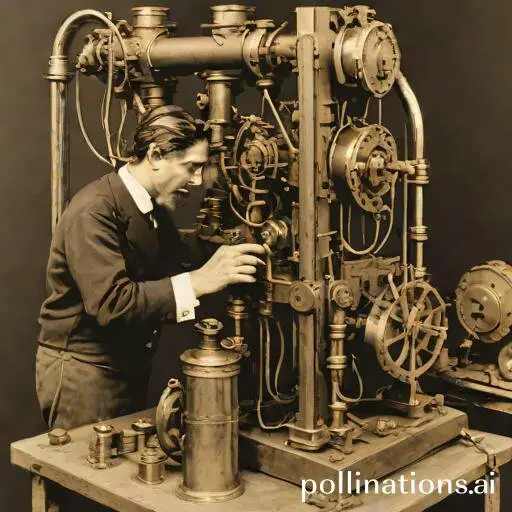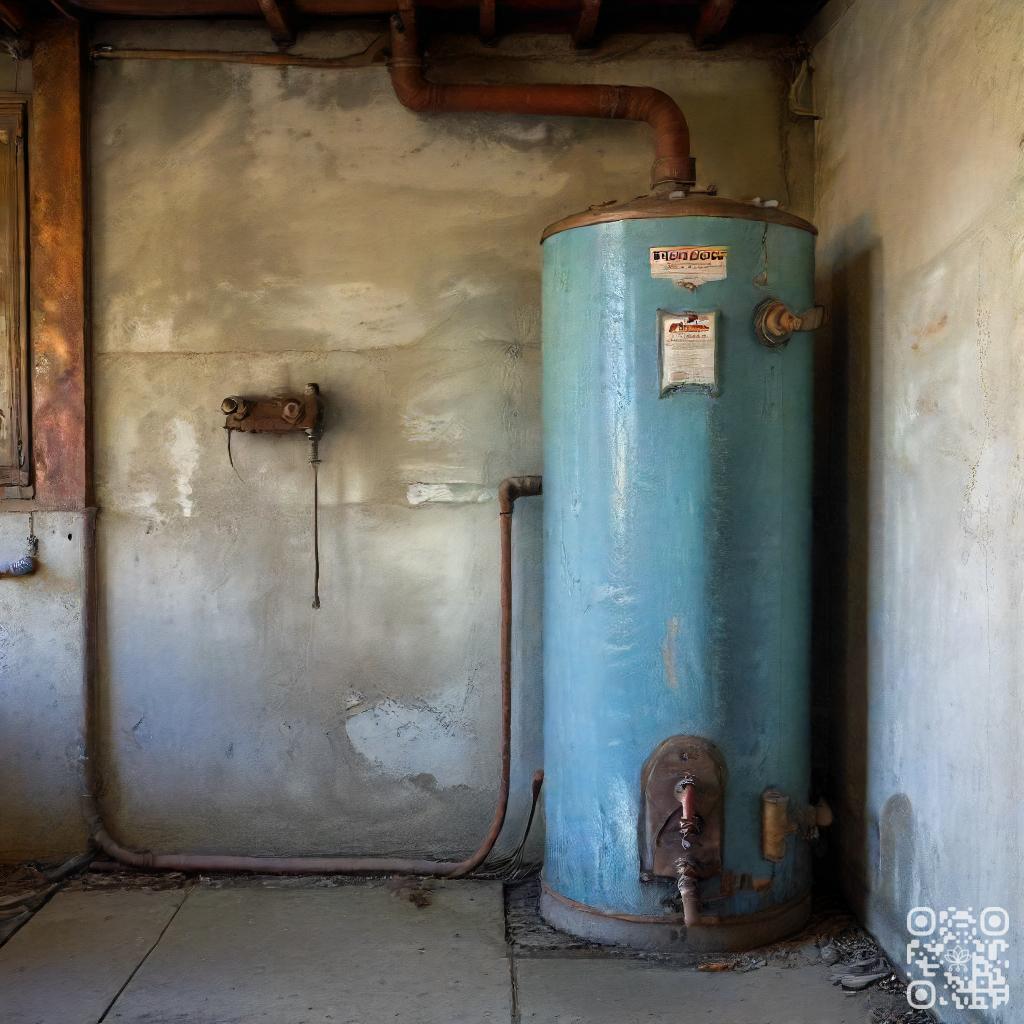
II. Symptoms of sediment buildup in the pilot assembly include a weak or yellow flame, difficulty lighting the pilot, or the pilot going out frequently.
III. Regular maintenance, such as flushing the water heater tank and cleaning the pilot assembly, can help prevent sediment buildup and prolong the life of the water heater.
Sediment buildup in water heaters can have a significant impact on the pilot assembly. Over time, minerals and debris can accumulate, leading to clogs and decreased efficiency.
This can result in a weaker flame or even a complete failure of the pilot light. Regular maintenance and flushing of the water heater can help prevent sediment buildup and ensure the pilot assembly functions properly.
By dealing with sediment buildup, homeowners can avoid costly repairs and keep their water heaters running smoothly.
Grasping Sediment Buildup
Sediment buildup refers to the accumulation of solid particles and minerals in water heaters over time. This buildup occurs naturally as water is heated and minerals such as calcium and magnesium precipitate and settle at the bottom of the tank.
1. What is sediment buildup?
Sediment buildup is the gradual accumulation of minerals and debris in the water heater tank. As water flows into the tank, it carries along small particles and minerals. When the water is heated, these particles settle at the bottom of the tank, creating a layer of sediment.
This sediment can cause various issues if not addressed, including reduced efficiency, increased energy consumption, and potential damage to the water heater.
2. How does sediment buildup occur in water heaters?
Sediment buildup occurs due to the natural process of water heating. When water is heated, the minerals and particles present in the water solidify and settle at the bottom of the tank. Over time, this sediment layer becomes thicker, reducing the available space for hot water and interfering with the heating process.
In areas with hard water, which contains high levels of minerals, sediment buildup tends to occur more rapidly. Regular maintenance and flushing of the water heater can help prevent excessive sediment accumulation.
3. What are the common signs of sediment buildup in water heaters?
There are several signs that indicate the presence of sediment buildup in a water heater:
- Noise: A rumbling or popping sound coming from the water heater may indicate the presence of sediment. The buildup causes the water to boil and bubble, creating these noises.
- Reduced hot water supply: Sediment buildup reduces the capacity of the water heater, leading to less available hot water for daily use.
- Longer heating times: If it takes longer than usual for the water heater to heat the water, sediment buildup might be the cause. The layer of sediment acts as an insulator, making it harder for the heating element to heat the water efficiently.
- Inefficient operation: Sediment buildup can decrease the overall efficiency of the water heater, resulting in increased energy consumption and higher utility bills.
To prevent these issues and prolong the lifespan of your water heater, regular maintenance, including flushing the tank to remove sediment, is essential. Consult the manufacturer’s guidelines or seek professional assistance for proper maintenance procedures.
| Common Signs of Sediment Buildup | Possible Causes |
|---|---|
| Noise | Water boiling and bubbling due to sediment accumulation |
| Reduced hot water supply | Less available hot water due to sediment occupying tank space |
| Longer heating times | Insulating effect of sediment layer makes heating less efficient |
| Inefficient operation | Decreased overall efficiency, leading to higher energy consumption |
Impact on Pilot Assembly
Relating to the efficient functioning of a pilot assembly, sediment buildup can have a significant impact. Sediment, which consists of dirt, debris, and mineral deposits, can accumulate over time and cause various issues that affect the overall performance of the pilot assembly.
1. Sediment buildup and its effect on the pilot assembly
Sediment buildup can obstruct the flow of gas to the pilot assembly, leading to reduced flame intensity or even complete pilot failure. This can result in issues such as difficulty in igniting the main burner, inconsistent flame, or even the pilot going out unexpectedly. It is crucial to address sediment buildup promptly to prevent these problems from occurring.
2. Common issues caused by sediment buildup in the pilot assembly
- Flame irregularities: Sediment accumulation can cause the flame to flicker, become weak, or produce an uneven pattern. This can affect the efficiency of the pilot assembly and impact the overall performance of the heating system.
- Ignition problems: Excessive sediment buildup can make it challenging to ignite the pilot flame, leading to repeated ignition attempts or the pilot not lighting at all. This can result in a lack of heat and discomfort in the surrounding environment.
- Pilot shutdown: In severe cases, sediment accumulation can cause the pilot to shut down completely. This not only disrupts the heating process but also poses potential safety risks.
3. Preventing sediment buildup in the pilot assembly
To prevent sediment buildup and maintain the optimal functioning of the pilot assembly, regular maintenance is essential. Here are some preventive measures:
- Regular cleaning: Periodically clean the pilot assembly using a soft brush to remove any accumulated sediment. This will ensure proper gas flow and flame stability.
- Water treatment: If the water supply contains high levels of minerals, consider installing a water treatment system to minimize sediment formation.
- Filter installation: Use a sediment filter in the gas line to trap particles before they reach the pilot assembly. This will help prevent sediment buildup and prolong the lifespan of the assembly.
Cleaning the Pilot Assembly
1. Steps to clean the pilot assembly
Cleaning the pilot assembly is an essential maintenance task to ensure the efficient operation of your equipment. Follow these steps to clean the pilot assembly:
- Step 1: Turn off the gas supply to the equipment.
- Step 2: Locate the pilot assembly, which is typically located near the burner.
- Step 3: Remove any debris or dirt from the pilot assembly using a soft brush or compressed air.
- Step 4: Inspect the pilot orifice for any clogs or blockages. Use a small wire or needle to clear any obstructions.
- Step 5: Check the pilot flame. It should be a steady blue flame with a small yellow tip. If the flame is yellow or flickering, it may indicate a problem with the assembly.
- Step 6: Reassemble the pilot assembly and turn on the gas supply.
2. Tools required for cleaning the pilot assembly
Before you begin cleaning the pilot assembly, gather the necessary tools:
- Tool 1: Soft brush or compressed air
- Tool 2: Small wire or needle
3. Frequency of cleaning the pilot assembly
Regular cleaning of the pilot assembly is crucial for optimal performance. The frequency of cleaning depends on various factors, including the type of equipment and its usage. As a general guideline, it is recommended to clean the pilot assembly at least once a year or as per the manufacturer’s instructions. Despite this, if you notice any issues with the pilot flame or performance, it is advisable to clean it more frequently.

Flushing the Water Heater
Flushing your water heater is an essential maintenance task that ensures the longevity and efficiency of your system. By removing sediment buildup, you can prevent potential issues and keep your water heater running smoothly.
1. What is water heater flushing?
Water heater flushing involves draining the tank and removing any sediment or mineral deposits that have settled at the bottom. Over time, these deposits can accumulate and affect the performance of your water heater.
2. How does flushing help prevent sediment buildup?
Flushing helps prevent sediment buildup by clearing out any debris that may have settled in the tank. Sediment can reduce the efficiency of your water heater, making it work harder and potentially leading to higher energy bills. Regular flushing removes these deposits, allowing your water heater to operate at its full capacity.
3. What are the steps to flush a water heater?
Flushing your water heater is a straightforward process that can be done with a few simple steps:
- Turn off the power supply to the water heater.
- Shut off the cold water supply valve.
- Attach a hose to the drain valve located at the bottom of the tank.
- Place the other end of the hose in a suitable drain or outside area.
- Open the drain valve and allow the water to flow out.
- Once the tank is empty, open the cold water supply valve to flush out any remaining sediment.
- Close the drain valve and remove the hose.
- Turn on the power supply and let the water heater refill.
Remember to exercise caution when working with hot water and electrical components. If you are unsure about the process, it is recommended to seek professional assistance.
| Benefits of Water Heater Flushing |
|---|
| 1. Improved energy efficiency |
| 2. Extended lifespan of the water heater |
| 3. Reduced risk of breakdowns and costly repairs |
| 4. Consistent hot water supply |

Other Maintenance Tips
Regular maintenance is essential to prevent sediment buildup in your water heater. In addition to the preventive measures mentioned earlier, here are some other tips to keep your water heater running smoothly:
1. Additional Preventive Measures
- Flush the water heater tank at least once a year to remove any sediment that may have accumulated.
- Inspect the anode rod regularly and replace it if necessary. The anode rod helps prevent corrosion inside the tank.
- Check the temperature and pressure relief valve to ensure it is functioning properly. This valve helps prevent excessive pressure and temperature buildup.
2. Temperature Setting and Sediment Buildup
The temperature setting of your water heater can also affect sediment buildup. If the temperature is set too high, it can accelerate sediment formation. It is recommended to set the temperature to 120 degrees Fahrenheit (49 degrees Celsius) to balance energy efficiency and hot water needs.
3. Benefits of Regular Water Heater Maintenance
Regular water heater maintenance offers several benefits:
- Improved energy efficiency: By preventing sediment buildup, your water heater can operate more efficiently, reducing energy consumption and lowering utility bills.
- Extended lifespan: Regular maintenance helps prolong the lifespan of your water heater, saving you money on premature replacements.
- Reduced risk of malfunctions: Sediment buildup can lead to various issues, such as clogged pipes or a malfunctioning heating element. By maintaining your water heater, you can minimize the risk of such problems.
Bottom Line
In regard to sediment impact on water heater pilot assembly, prevention is key. Regular maintenance and flushing of the tank can help prevent sediment buildup and prolong the life of your water heater. If you do experience issues with your pilot assembly, it’s important to address them promptly to avoid further damage or safety hazards. Consulting a professional plumber or HVAC technician can help ensure proper repairs and maintenance are performed. Remember, neglecting your water heater can lead to costly repairs or even replacement, so stay on top of maintenance to keep your system running smoothly.
In summary, sediment buildup in your water heater can have a significant impact on the pilot assembly, causing issues with ignition and potentially leading to safety hazards. Regular maintenance and prompt repairs can help prevent these issues and prolong the life of your water heater. Don’t neglect your system – take care of it to avoid costly repairs and ensure reliable hot water for your home.
Read More:
1. Sediment Removal And Water Heater Element Lifespan
2. Sediment Impact On Water Heater Anode Efficiency










